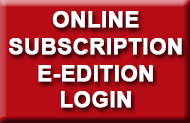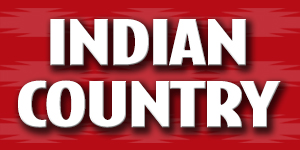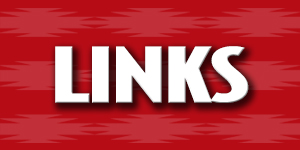Research presented at ISU Indigenous Peoples’ Day lightning talks showcase
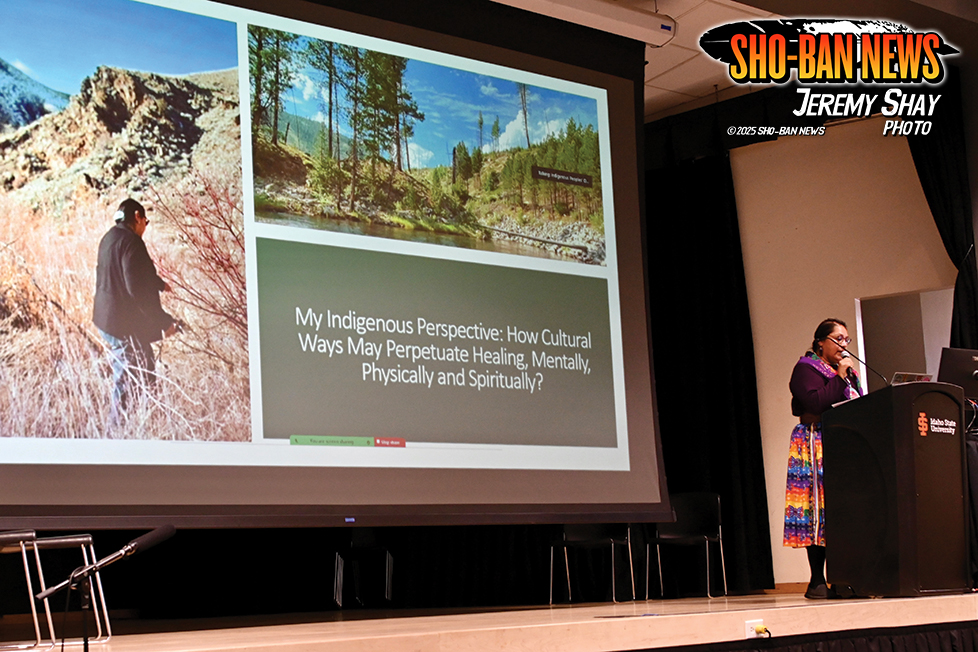
Sho-Ban tribal member and Idaho State University graduate Bobette Haskett presents during the Indigenous Peoples’ Day research lightning talks session on Monday, October 13; Haskett won the graduate student division.
By JEREMY SHAY
Sho-Ban News
POCATELLO — At the annual Idaho State University Indigenous Peoples’ Day event a student research “lightning talks” competitive presentation showcase was conducted, hosted by Shoshone-Bannock tribal member Dr. Laticia Herkshan, on Monday, October 13.
With two categories — graduate and undergraduate students — each had an opportunity to speak for three minutes about their research and studies, and the winner in each division received $500. The research talk prize money was sponsored by the Idaho Community-engaged Resilience for Energy-Water Systems (I-CREWS), which is a $24 million NSF EPSCoR research project that aims to address the consequences of meteorological, population, and technological change on energy-water (E-W) systems, according to their official website.
Two Shoshone-Bannock tribal members participated — graduate student Bobette Haskett and undergraduate student Brittney Neilsen Carter; Eastern Shoshone tribal member and undergraduate student Darious Tillman also presented.
Dr. Laticia Herkshan introduced the presentations by greeting the attendees, “Indigenous joy is an act of resilience,” said Dr. Herkshan. “For too long, research involving Indigenous peoples was something done to us, rather than done with us,” she said. Herkshan continued by referencing a Māori scholar Linda Tuhiwai Smith, “she writes in Decolonizing Methodologies, ‘The word research is probably one of the dirtiest words in the Indigenous worlds that can be,’ she writes to reminds us that research has often been a tool used for colonization, where extraction has happened, and harm has happened. Extracting those stories, that knowledge and data from Indigenous communities without consent, benefit, or understanding.” Herkshan continued, “What we see today and what we hope to celebrate in this session is a different story. It’s impactful, it’s Indigenous-led, it’s community-driven research that reclaims research as a pathway toward healing, toward self-determination and toward joy.”
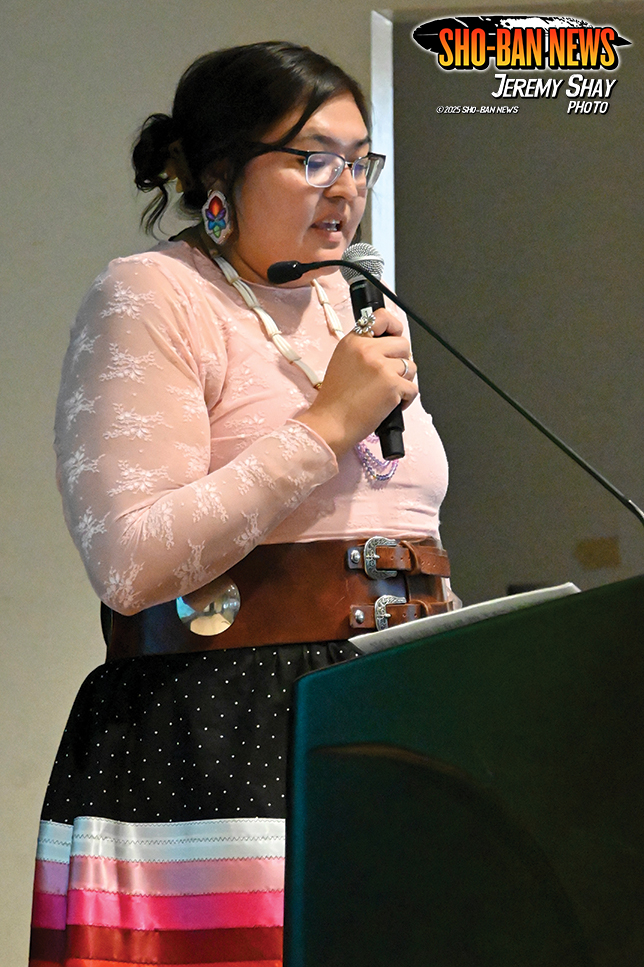
Sho-Ban tribal member and ISU graduate Dr. Laticia Herkshan hosted the
lightning talks presentations.
The first of three undergraduate student presentations was Wendell Bouwens, who is studying Earth and Environmental Systems, his presentation was titled “Impact of Human Activity on Soil Nitrogen Cycling in Yosemite National Park.” Bouwens detailed his research in Yosemite, with the focus on human waste production, specifically how nitrogen impacts ecosystems, through collecting samples in wilderness areas, “I took soil samples from popular campsites along the lake, and then using a control valley, which was an area very similar to this. However, with very few people, I can then see how the nitrogen levels change between the two areas. Using mass spectrometry, you can essentially figure out how much of the soil is nitrogen. Using these methods, we can determine how nitrogen from human waste affects ecosystems and ultimately how we, as a species, when we recreate, affect our environment.”
ISU Sociology and Shoshone Language student Darious Tillman’s presentation was titled “The Occult Wisdom of the Shoshone,” examining culture and history to help understand the supernatural. “What happened to the Indian ghosts? This has been a question I’ve asked myself in my research. Western science has generally always cast spirituality and supernatural to the side because it’s a little difficult to measure an entity that has no form,” Tillman said. “But for Indians, we understand that within our lifestyle, within our culture, the supernatural and the things that we cannot see, those make us who we are. That is what creates our culture and our history. When we think about our ancestors, they created various specific practices and rituals to help us understand the supernatural and help us purify the supernatural. For example, the more common ones are smudging or making a spirit plate. But historically, our ancestors also had hidden, or some people say, occult, or I would say it is more secret teachings that people don’t generally know. They were a master at what they knew, they were a master at the natural world and of the landscape.”
Tillman used the Pocatello area as an example, citing the time period of Western expansion in the area, and the creation of the Fort Hall Reservation and boarding schools, “So what happened to all the Indian ghosts? They must still be there, they must still be living there, and so that’s why I took a lot of interest in learning these things. For all of you who have gone camping, you know that when the sun sets, the night becomes alive. You start to hear things that you didn’t normally hear in the daytime,” said Tillman. “And so our ancestors, they didn’t have a choice. They had to live in these environments. They had to live in their landscape, and most importantly, they had to find traditions and practices so that they could live in these places with compassion and with fearlessness.”
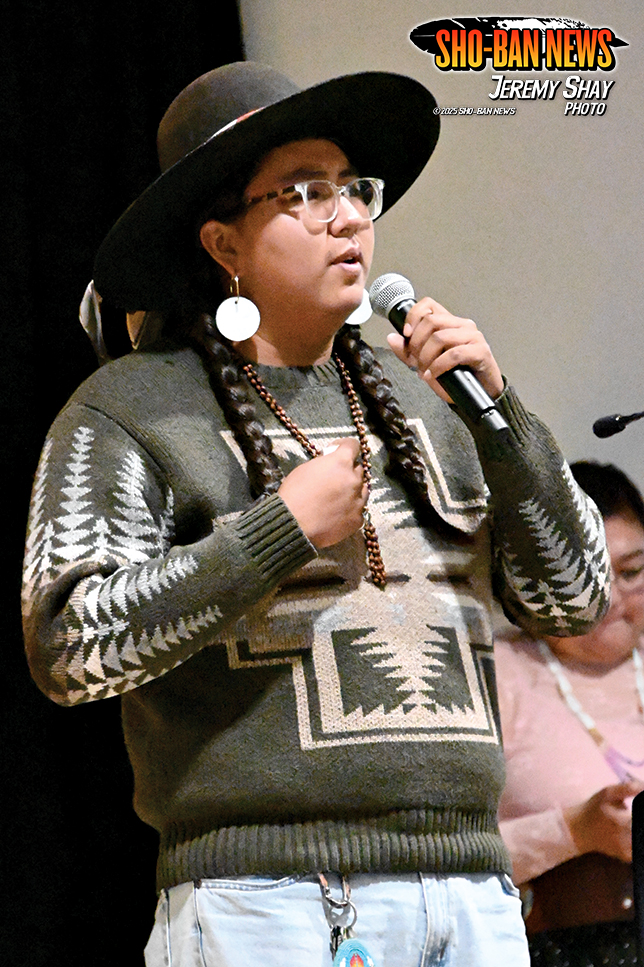
Eastern Shoshone tribal member and ISU Sociology junior Darious
Tillman during his presentation “The Occult Wisdom of the
Shoshone;” Tillman won the undergraduate division.
Tillman said he takes pride in his research and the study of history and culture is an asset for living in the present, “we as contemporary Indian people, we can go back and look at the anthropological record. We can see that you, the early anthropologists came out here, they recorded our ancestors, and now we have the power to put the puzzle pieces together to start bringing back these traditions, to start reconnecting with not only our culture, but with our stewardship to the land.”
Sho-Ban tribal member undergraduate student Brittney Neilsen Carter discussed preserving culture for future generations, her presentation titled “Bonds So Strong.” Neilsen Carter is pursuing a bachelor’s in science, with a focus on small business accounting. She began her presentation by highlighting Indigenous influence in popular culture and media. “Our proud heritage has had life breathed back into it, no longer looked at with disdain, but rather admiration. Finally, our grandparents and great grandparents’ perseverance has paid off. Even amidst their assimilation, they remained true to their culture, knowing that their silence didn’t mean they were giving in,” she said. “It’s these legacies I have started to teach my daughter. I have been making her regalia for local powwows for the past couple of years now. I have been trying to get both she and I involved and connected to our culture. She is the last generation able to enroll with the Shoshone-Bannock Tribes, and I want her to be proud. I would love her to carry on our line, I want her to remember where we come from.”
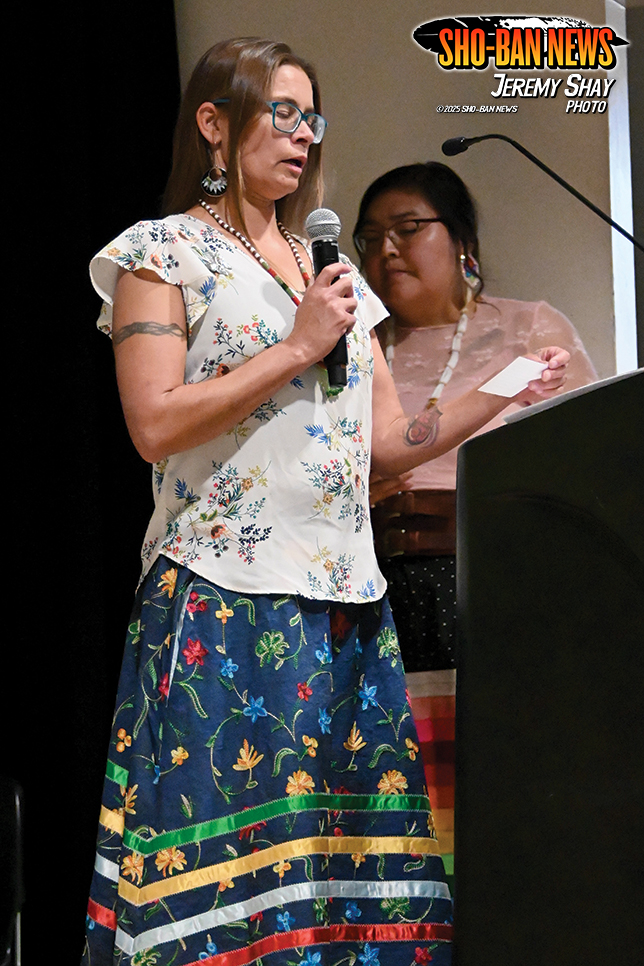
Sho-Ban tribal member and ISU undergraduate student Brittney
Neilsen Carter presents “Bonds So Strong” during the lightning talks.
The first graduate student to present was Alex Robinson, who is a master’s student in the Anthropology department — their presentation was titled “It’s All in the Code: Camas Variation Across Idaho.” Robinson began by explaining their research specifically focuses on the genetic composition of camas. “Every single person, every single living thing has a recipe contained inside of their cells. These recipes, for plants, specifically camas, tell leaf size, shape, coloration, bulb size, what the flowers look like, coloration, too. All of these components come together to build our lovely camas,” said Robinson. “From traditional gatherers, we’ve heard across sites in Idaho that camas has variations in how it looks, both sizes. Using molecular techniques, essentially breaking them down bits of camas, extracting the DNA and running that through on a computer. I want to compare differences in the genetic code in this recipe to see what the environment is doing to camas in hopes to be able to preserve camas for future generations.”
ISU graduate student Bobette Haskett was the final presenter; Haskett has a bachelor’s degree in history and a minor in geology. Her presentation was titled “My Indigenous Perspective: How Cultural Ways May Perpetuate Healing, Mentally, Physically and Spiritually?”
“In the United States, on Indian reservations and in urban tribal communities, intergenerational historical trauma has silently hurt, injured and haunted our Native people — physically, mentally, and spiritually,” said Haskett. “In Indian country, there is a growing concern for the needed medical and clinical assistance to help combat health disparities in Native American populations. I believe our traditional cultural ways can play a critical role in the healing approach of traumatic experiences.”
She continued by detailing her research, studying and observing how tribal practices assist in overall wellness, including her own practices: creating beadwork, weaving and food gathering. “To further understand and help guide approaches for addressing trauma, my research asks this question — how does reconnecting with Indigenous culture and practices begin to heal the effects of historical trauma for native people? By recognizing, understanding and practicing our cultural ways, we may see that it can heal and empower us to be resilient and strong, like our ancestors had to be,” she said. “I predict that through actively practicing and participating in our cultural traditions, we can experience a restorative healing condition in our lives and help others to also feel this — perpetuating a positive healing, domino effect.”
Haskett said a plan for her research is to source scholarly literature on healing trauma, sharing her experiences, interviews and focus groups with tribal elders and members, “their experience and knowledge is invaluable.”
Following the presentations, Dr. Herkshan asked for audience questions while the judges scored each presenter.
The undergraduate student category winner was Darious Tillman and the graduate winner was Bobette Haskett, each receiving $500 for their research, sponsored from the I-CREWS program.
Dr. Laticia Herkshan thanked the student participants and hopes to continue the lighting talks presentations at next year’s Indigenous Peoples’ Day event.

